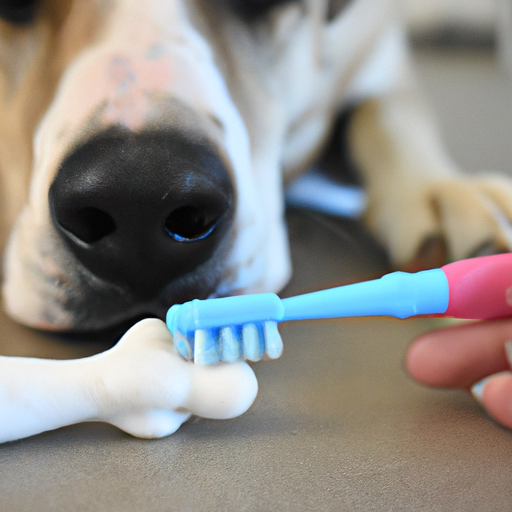As a devoted pet parent, the health of your four-legged friend is of paramount importance. Gum disease in dogs, also known as periodontal disease, is a common yet serious ailment that affects a significant number of dogs. If left untreated, it can lead to severe complications such as tooth loss, infections, and even damage to vital organs. This article aims to provide a comprehensive guide on how to treat gum disease in dogs, allowing you to ensure your pet’s oral health is in the best possible condition.
-
Table of Contents
- Understanding Gum Disease in Dogs
- Symptoms of Gum Disease in Dogs
- Preventing Gum Disease in Dogs
- Treating Gum Disease in Dogs
- FAQs about Gum Disease in Dogs
-
Key Takeaways
- Gum disease in dogs, if left untreated, can lead to serious health problems.
- Regular brushing and a healthy diet can help prevent gum disease.
- Professional cleaning and, in severe cases, surgery may be necessary for treatment.
- Regular vet check-ups are essential to monitor your dog’s oral health.
Understanding Gum Disease in Dogs
To effectively treat gum disease, it’s essential to understand what it is. Gum disease in dogs is a progressive inflammation of the dog’s gums and the supporting structures of the teeth caused by the buildup of plaque. Over time, plaque hardens into tartar, leading to gum inflammation, also called gingivitis. If not treated, this can progress to periodontitis, which can damage the tissue and bone supporting the teeth leading to tooth loss.
Symptoms of Gum Disease in Dogs
Identifying gum disease early can significantly improve your dog’s prognosis. Here are some symptoms you should look out for:
- Bad breath
- Red, swollen or bleeding gums
- Difficulty eating or loss of appetite
- Loose or missing teeth
- Pawing at the mouth
- Changes in behavior such as irritability
If you notice any of these symptoms, it’s important to schedule a visit with your vet as soon as possible.
Preventing Gum Disease in Dogs
Prevention is always better than cure, especially when it comes to your dog’s oral health. Here are some steps you can take to prevent gum disease in dogs:
- Regular Brushing: Brush your dog’s teeth daily using a dog-friendly toothpaste. This helps remove plaque before it can harden into tartar.
- Healthy Diet: A nutritious diet can help maintain your dog’s overall health, including oral health. Some vets recommend specially-formulated dental diets or dental chews that can help reduce plaque and tartar buildup.
- Regular Vet Check-ups: Regular check-ups allow your vet to monitor your dog’s oral health and catch any signs of gum disease early.
For more detailed information on dog dental care, you can visit this page.
Treating Gum Disease in Dogs
Treatment for gum disease in dogs depends on the severity of the condition. For mild cases, a professional cleaning may be sufficient. This involves removing plaque and tartar from above and below the gum line.
In more severe cases, treatment may involve:
- Deep Cleaning: This is performed under anesthesia and involves scaling and planing the teeth to remove tartar from below the gum line.
- Antibiotics: These may be necessary to treat any underlying infection.
- Surgery: In advanced cases, surgery may be necessary to clean deep pockets of infection and, in some cases, to remove severely diseased teeth.
You can refer to this guide for tips on preparing your dog for surgery.
FAQs about Gum Disease in Dogs
Below are some frequently asked questions about gum disease in dogs:
-
What breeds are prone to gum disease?
Small breeds and brachycephalic breeds (dogs with short noses) are more prone to gum disease due to the crowding of their teeth. -
Can gum disease in dogs be cured?
Once periodontitis has set in, it cannot be completely cured. However, with professional treatment and good home care, progression of the disease can be halted. -
What happens if gum disease is left untreated?
If left untreated, gum disease can lead to tooth loss, oral pain, and infections that can spread to other parts of the body, potentially damaging vital organs like the heart and kidneys.
In conclusion, gum disease in dogs is a serious condition that requires prompt attention. Regular brushing, a healthy diet, and regular vet check-ups can go a long way in preventing this disease. If your dog is diagnosed with gum disease, early treatment can help prevent more serious health problems.
For more information on dog health, check out the American Veterinary Medical Association.



